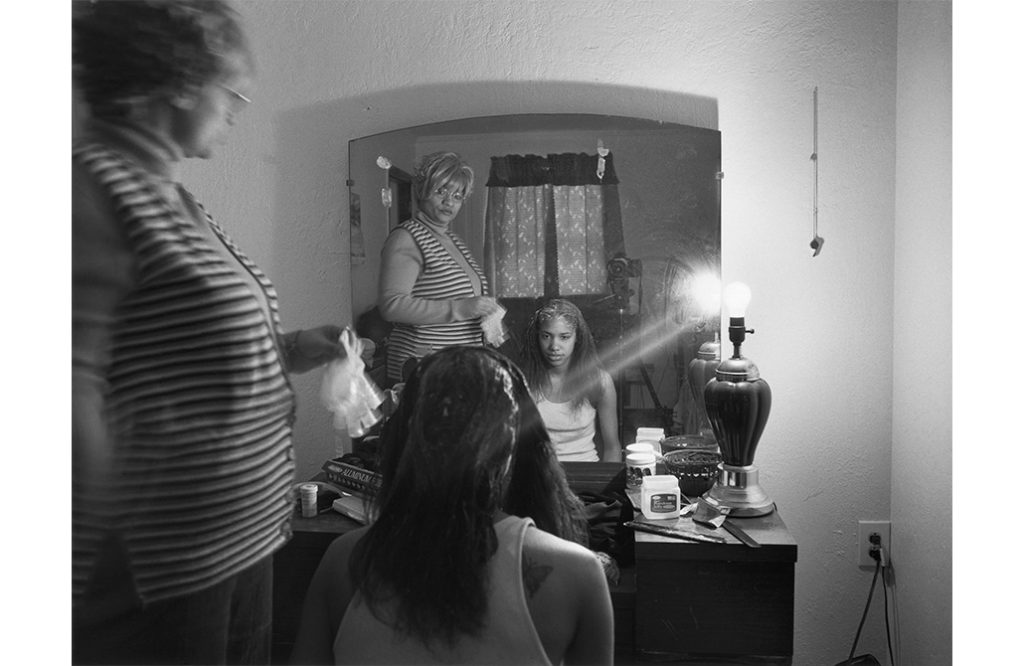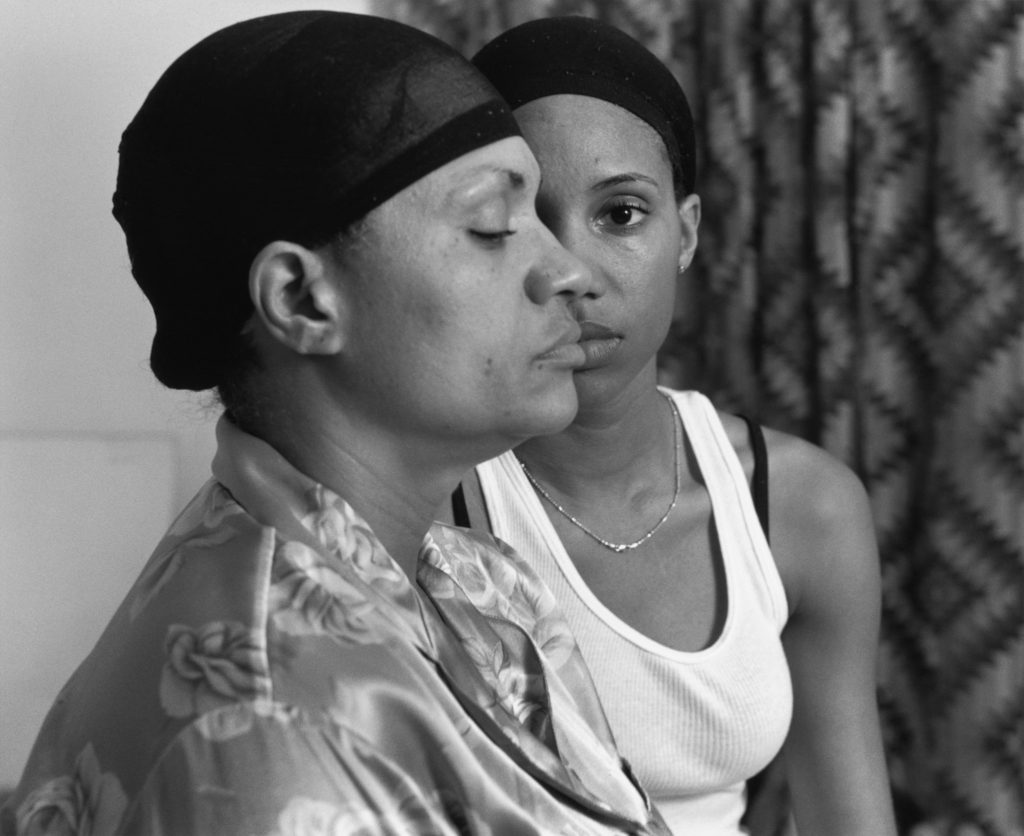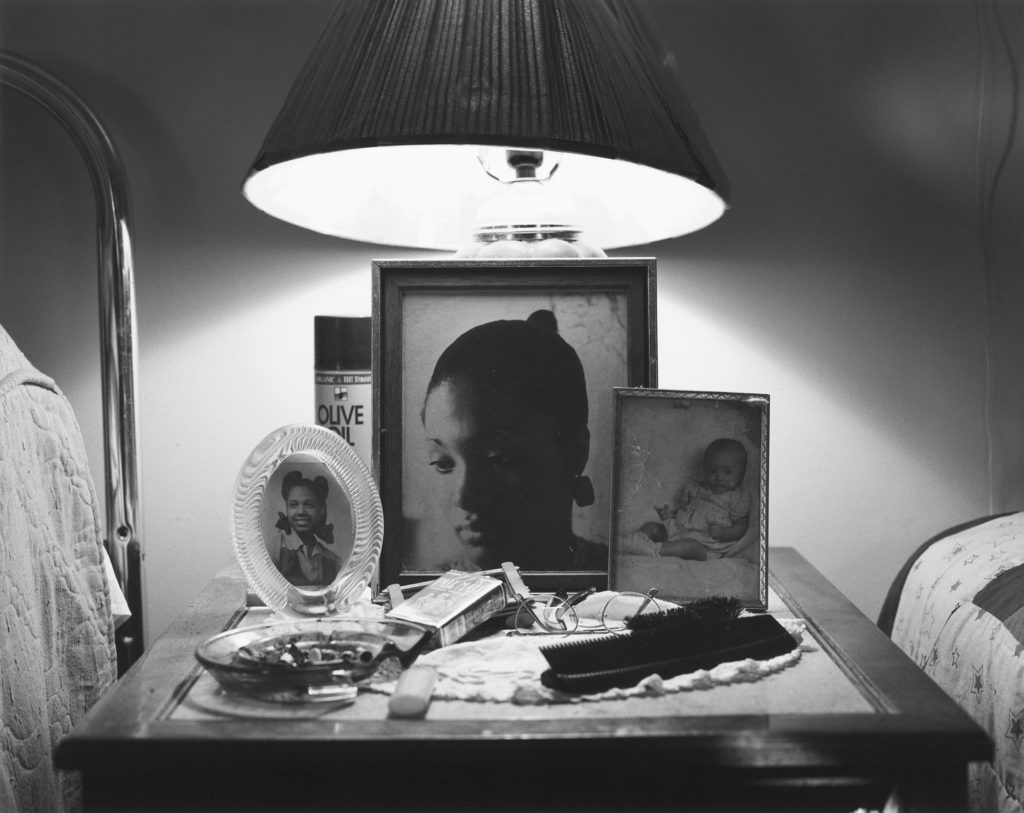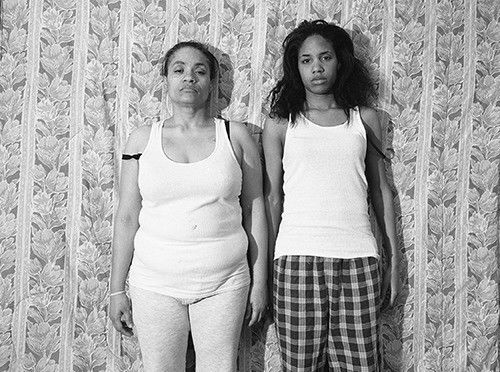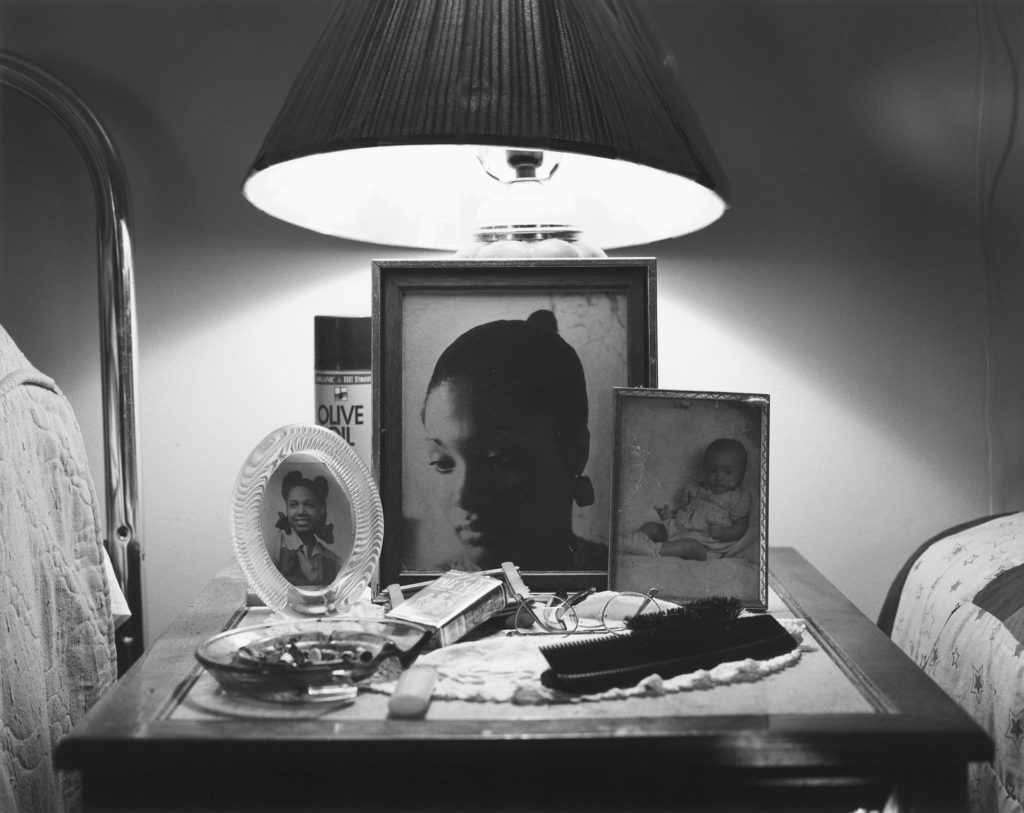LaToya Ruby Frazier:
Context and Concept:
The Notion of Family (2014) is Frazier’s photographic series which aims to tell the narrative of her African-American family whom are struggling to come to terms with oppression (prolonged cruel or unjust treatment or exercise of authority) in Braddock, a suburb of Pittsburgh, and the negative physical and psychological effects of the city’s steel industry. The paperback photo-book also looks at the impact of racism in the small suburb as well as the decline in the community and family, showing her personal and political viewpoint towards this topic. In this she explore three generations of her family who have lived through these issues: her grandmother, mother and herself which reinforces the personal attitudes towards her imagery, who “lives parallel the rise and fall of the steel mill industry,” (Frazier:2014) . Critics refer to her photographs as a “weapon” of choice against racism, intolerance and poverty. This series about the substandard living conditions, hardships and withering effects of the pollution-borne illness that have effected the three women, on top of their struggles to survive, Frazier illuminates the human cost of political indifference and neglect. This begins to explain the conceptual and contextual factors of her work and how it has influenced her narrative.
Mood Board Expressing LaToya Ruby Frazier’s ‘The Notion of Family’ photographic series.
“The Notion Family responds to that call to suspend the passive aesthetics that turns abject poverty into an object of enjoyment” (Frazier:2014:’So Present So Invisible’)
The quote above comes directly from Frazier during an interview with David Company, who gains insight into her recent project ‘The Notion Family’. In this she supports her conceptual representation of showcasing the negative impact of poverty into the suburb and how it has massively impacted her family, whom are African-American. She suggests that the photographic book stops us from being susceptible, as viewers, and fully understand the crisis and the issue that she is raising through her imagery, which is done as a form of enjoyment and entertainment to us. Personally, I believe that she is correct in what she is saying as her imagery holds powerful political and personal response to this issue, as the message is at the forefront of the images. This is reinforced by the use of words, verbatim from her family, which reinforces these viewpoints, and allows us to become a more active viewer and allows the message to be more susceptible to the issue arising.
“I helped Gabriella Kessler and Jean-Loic Portron by informing them about African-American families and residents that remain voiceless and invisible to mainstream media” (Frazier:2014:’So Present So Invisible’)
During her interview with David Company she explains how and clearly presents her conceptual elements within the photographic series and how it links into the contextual factors. In the quote above she is simplifying the point that her race, African-American, are being ignored by society leaving them to be seen and not heard. She talks about how a she helped tow people who work for the media understand this topic, as it is an issue which is ignored by journalists, thus these issues are not raised with the world. This presents the theme of neglect and really illuminates how poorly treated Frazier and her family are, thus emphasising the conceptual factors of her work. With the statement made above, I believe that what she is saying is true, as after reading around her work it is mainly art critics who are writing about the issue, but no other media source such as the news.
“I am obliged to document and counter this reality, and ultimately re-imagine and rewrite it myself.” (Frazier:2014:’So Present So Invisible’)
Above she is describing how she feels almost forced to outline these issues of racial discrimination in Pittsburg and document how it is affecting these people’s lives, in hope that she can changed the way in which they are treated and “counter this reality” so equality is accomplished within the small suburb. She talks about how this photographic series almost acts as her imagination, how she wants to reshape and create a better world were all races, genders, religions etc are treated equally with respect. Personally, I some what agree to what she is saying, after looking through the series the images hold a pejorative tone which only outline the state at which the town is in now and not the future. However, I believe this is done to also make the viewers reimagine what the town could look like.
Visual and Technical:
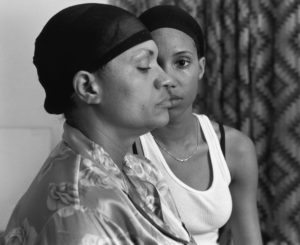
The photograph above is one my favourite outcomes from Frazier’s ‘The Notion Family’ photographic series. When looking at the image, initially out eyes are drawn to the woman’s eye in the background, located in the centre of the frame, thus making this the main focal point of the photograph. Moving around the image out eyes then move to the two models and then onto the plain background, which emphasises their race of African-American, due to the patterned curtain in the background of the imagery. Both models are wearing lounge wear with wig caps on suggesting they are in an environment where they feel safe. The women in the foreground is covering half of the other subjects face and has her eye closed which emphasises the concept that their race is only being seen and not heard and are almost voiceless and forgotten within the small suburb. In addition, the facial expressions on the women also suggest the ideology of a sense of being forgotten. The frame has a sense of space, which works well with the other formal elements of texture and pattern. The photograph itself is taken at a straight on angle with it being presented in black and white, allowing high tonal contrast to be presented, illuminating the texture. The portrait is taken as a landscape, which suggests that it is a wide and on going issue in the suburb, and is in the style of a head shot, which juxtaposes the actual reasons for a head shot.
Technically, Frazier’s work is simplistic which allows the conceptual and contextual representations to be the forefront of her work. The lighting used would have been artificial through studio lighting and lighting readily found in that room. The light source is soft and can be considered cold, which illustrates the brutality of this reality and how it has negatively impacted the families life. This works well with the low ISO which is used as no intended noise is being presented within the imagery. As well as the white balance being accurately set to an in door setting allowing for clear colour correction, illuminating the tonal contrast within the frame. In addition to this, the shutter speed is kept to a quick capture as there is no movement or intended blur within the frame of the photograph, which helps to compliment the ISO setting used. The aperture which has been used is roughly a medium setting as to some extent there is a narrow depth of field being used, as the background is slightly more blurred compared to the foreground. Due to this it creates a little blur which reinforces the ideology of the family being forgotten about in society.
Action Plan:
To further my understanding of the techniques and stylistic features of Frazier, I will implement these techniques into my next photoshoot. I intend to photograph my grandparents lifestyle through black and white portraits in order to raise viewers understanding of their social situation, employing similar conceptual reasoning towards my next photoshoot.

